 WebScraping.AI
VS
WebScraping.AI
VS
 UseScraper
UseScraper
WebScraping.AI
WebScraping.AI delivers a sophisticated web scraping solution that combines advanced browser automation, proxy management, and AI-powered content extraction. The platform handles complex technical challenges including JavaScript rendering, CAPTCHA solving, and HTML parsing on their infrastructure, allowing developers to focus on data collection.
The service incorporates LLM-powered tools for extracting unstructured content, generating summaries, and providing natural language answers to queries about scraped pages. With features like geotargeting support and automatic proxy rotation, the platform ensures reliable data extraction from any website while maintaining high performance and security standards.
UseScraper
UseScraper is a powerful web scraping and crawling tool designed for speed and efficiency. It allows users to quickly extract data from any website URL and obtain the page content within seconds. For comprehensive data extraction, UseScraper's Crawler can fetch sitemaps or crawl thousands of pages per minute, leveraging its auto-scaling infrastructure.
The tool utilizes a real Chrome browser with JavaScript rendering capabilities. This guarantees that even the most dynamic websites can be scraped and processed accurately. UseScraper is capable of outputting data in several convenient forms, such as clean markdown, plain text or raw HTML.
Pricing
WebScraping.AI Pricing
WebScraping.AI offers Freemium pricing with plans starting from $29 per month .
UseScraper Pricing
UseScraper offers Usage Based pricing .
Features
WebScraping.AI
- JavaScript Rendering: Full page content rendering in real browser environment
- Rotating Proxies: Automatic proxy rotation with geotargeting capabilities
- HTML Parsing: Server-side parsing for reduced client load
- LLM Integration: AI-powered content extraction and analysis
- CAPTCHA Handling: Automatic CAPTCHA solving
- Developer SDKs: Support for Python, Ruby, and PHP
- Zapier Integration: Built-in automation capabilities
UseScraper
- Scraper API: Scrape any webpage quickly and efficiently.
- Crawler API: Crawl entire websites at high speed.
- JavaScript Rendering: Uses a real Chrome browser to process dynamic content.
- Multiple Output Formats: Extract data in plain text, HTML, or markdown.
- Multi-site Crawling: Include multiple websites in one crawl job request.
- Exclude Pages: Exclude specific URLs from a crawl with glob patterns.
- Exclude Site Elements: Write CSS selectors to exclude repetitive content from pages.
- Webhook Updates: Get notified on crawl job status and completion.
- Output Data Store: Access crawler results via API.
- Auto Expire Data: Set an auto expiry on data that you've saved to your own data store.
Use Cases
WebScraping.AI Use Cases
- Data extraction from websites
- Content aggregation
- Market research and analysis
- Price monitoring
- SEO analysis
- Competitive intelligence gathering
- Automated content summarization
UseScraper Use Cases
- Extracting data from websites for market research.
- Gathering content for AI model training.
- Monitoring website changes for competitive analysis.
- Collecting product information from e-commerce sites.
- Archiving web content for compliance or record-keeping.
Uptime Monitor
Uptime Monitor
Average Uptime
100%
Average Response Time
150.27 ms
Last 30 Days
Uptime Monitor
Average Uptime
99.72%
Average Response Time
114.4 ms
Last 30 Days
WebScraping.AI
UseScraper
More Comparisons:
-
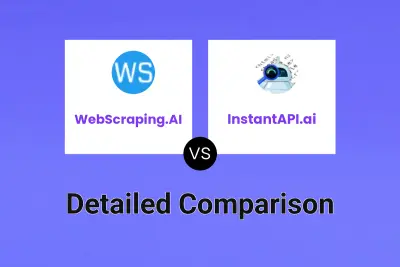
WebScraping.AI vs InstantAPI.ai Detailed comparison features, price
ComparisonView details → -
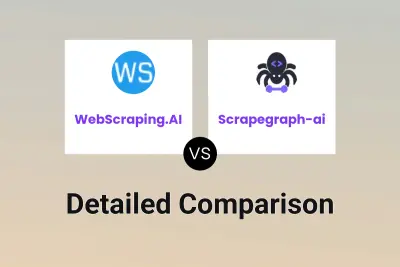
WebScraping.AI vs Scrapegraph-ai Detailed comparison features, price
ComparisonView details → -
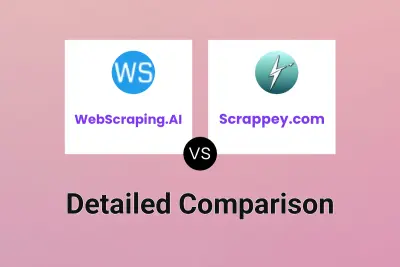
WebScraping.AI vs Scrappey.com Detailed comparison features, price
ComparisonView details → -
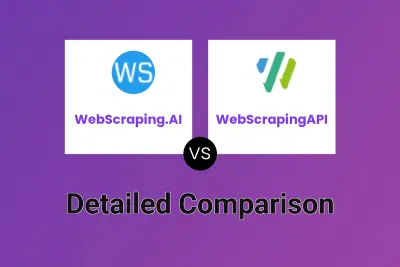
WebScraping.AI vs WebScrapingAPI Detailed comparison features, price
ComparisonView details → -
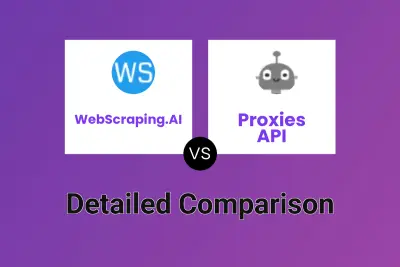
WebScraping.AI vs Proxies API Detailed comparison features, price
ComparisonView details → -

WebScraping.AI vs Scrapingdog Detailed comparison features, price
ComparisonView details → -

WebScraping.AI vs Minexa.ai Detailed comparison features, price
ComparisonView details → -

WebScraping.AI vs Scraping Pros Detailed comparison features, price
ComparisonView details →
Didn't find tool you were looking for?